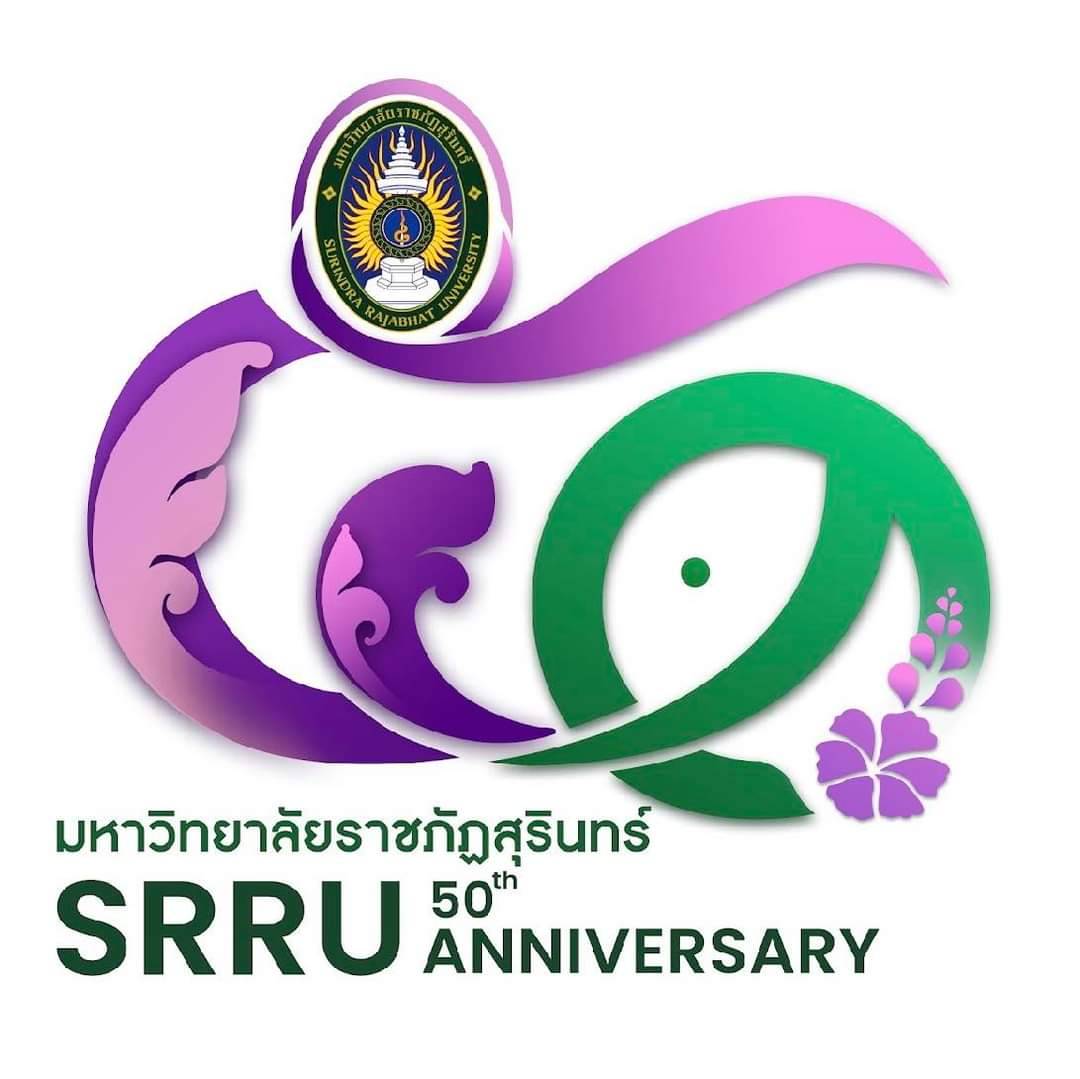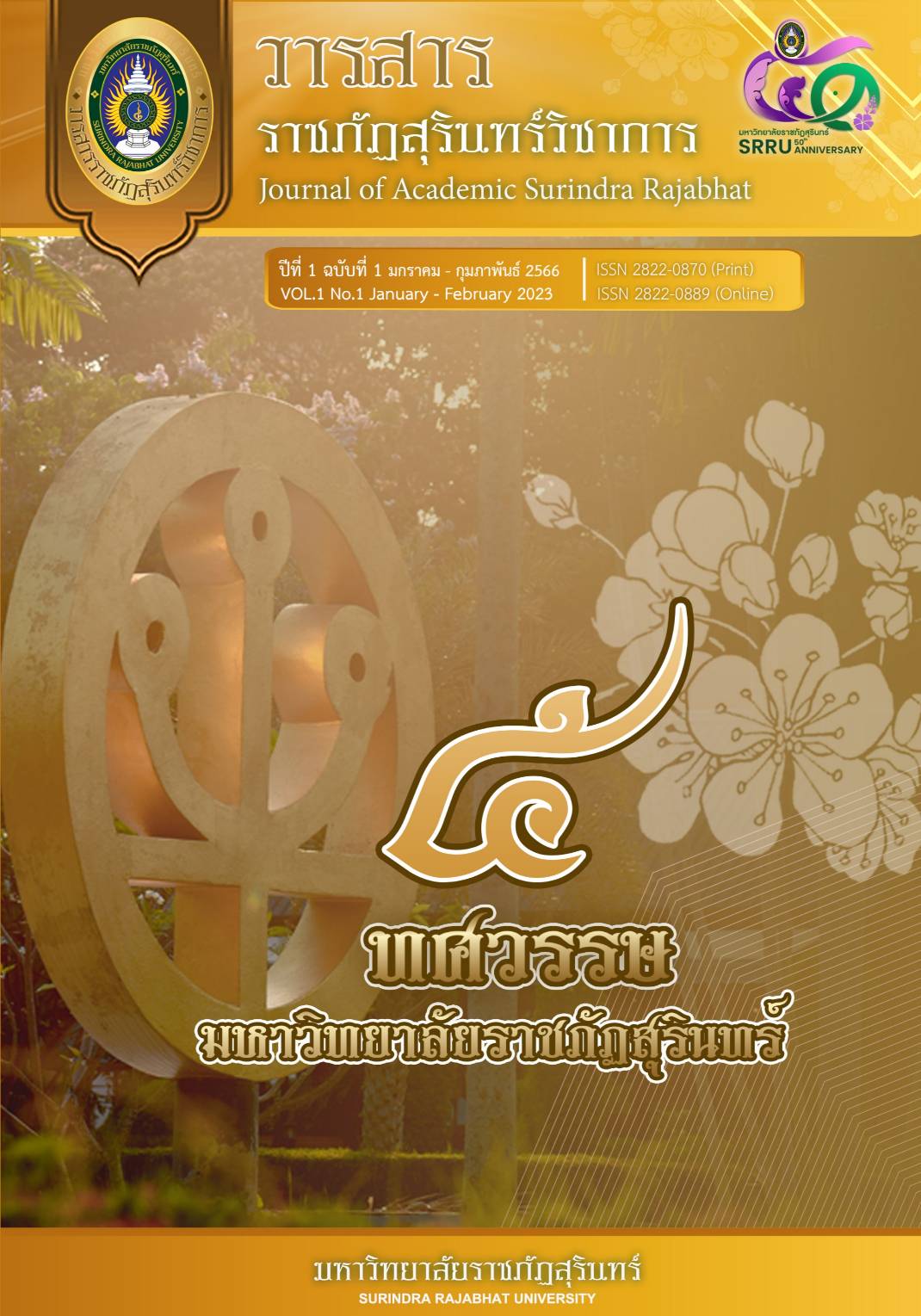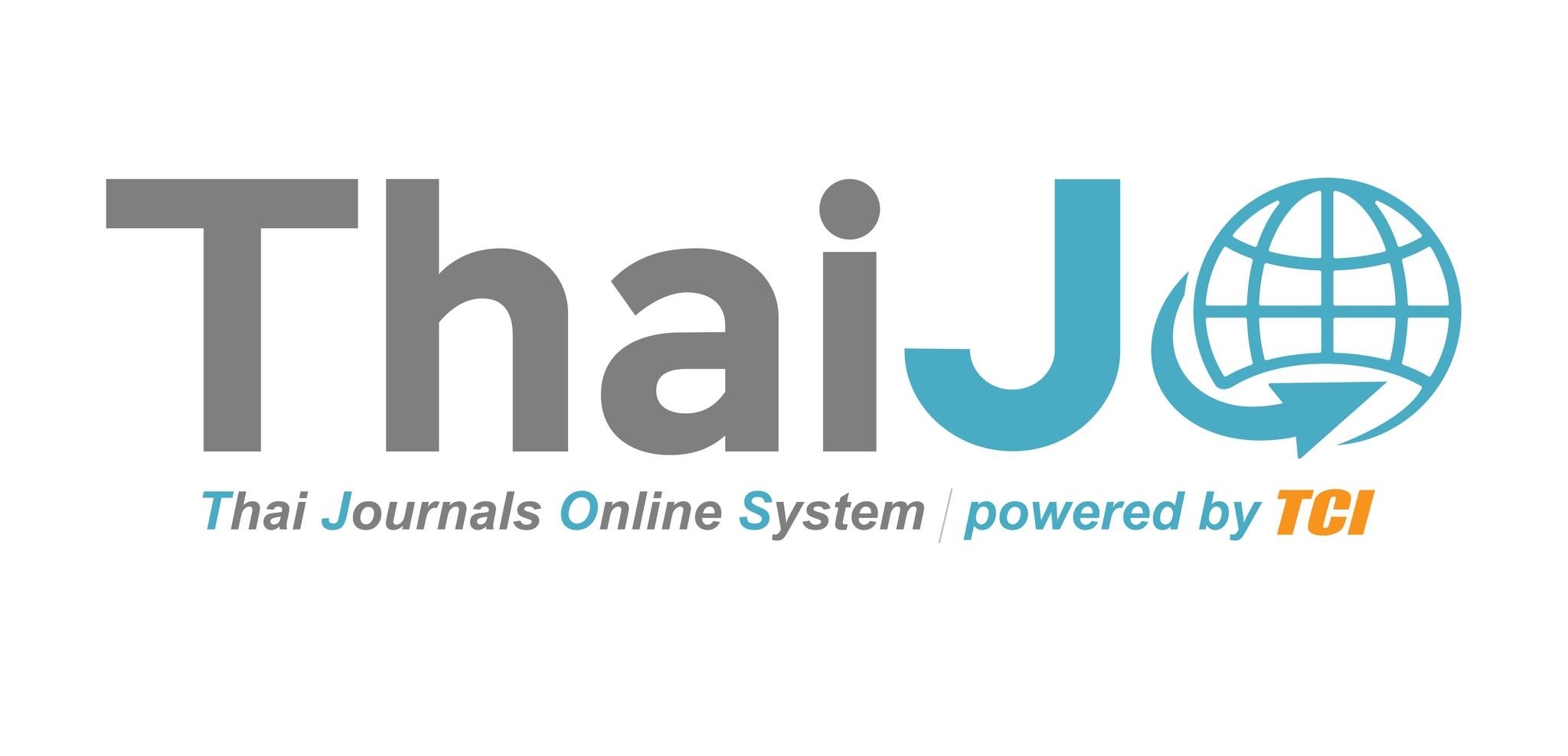Development of Mathematical Achievement on Linear Equations in One Variable Using Multimedia and Problem-Based Learning for Grade 7 Students
DOI:
https://doi.org/10.14456/jasrru.2023.36Keywords:
Mathematical Achievement, One Variable Linear Equation, Problem Based Learning: PBL, Mixed MediaAbstract
The purposes of the research were to the objectives of this research were 1) to develop learning efficiency. about linear equations in one variable of Mathayomsuksa 1 students by using multimedia in conjunction with problem-based learning management to be effective according to the 75/75 criteria. 2) Compare the academic achievements. about linear equations in one variable of Mathayomsuksa 1 students before and after using multimedia learning management together with problem-based learning management, and 3) studying student satisfaction towards multimedia learning management. with problem-based learning management about linear equations in one variable For Mathayomsuksa 1 students, the sample group of 30 Mathayomsuksa 1 students in this research was obtained by using cluster random sampling. There are 3 types of tools used in this research: 1. learning management plan using multimedia and problem-based learning management 2. one-variable linear equation test 3. questionnaire on student satisfaction towards learning management using multimedia and learning management Manage problem-based learning by finding percentage, mean and standard deviation.
The research findings showed that the 1) multimedia learning management combined with problem-based learning management Resulting in learning achievement in mathematics on linear equations in one variable. Higher than the criteria of 75/75, statistically significant at the .05 level. 2) Learning achievement. about linear equations in one variable of Mathayomsuksa 1students after using multimedia learning management together with problem-based learning management 3) Satisfaction, students' satisfaction toward learning mathematics was higher than before the multimedia learning management and the problem-based learning management was significantly 0.5. using mixed media together with problem-based learning management at a high level
Downloads
References
กัญจน์วิภา ใบกุหลาบ. (2562). ผลการจัดกิจกรรมการเรียนรู้โดยใช้ปัญหาเป็นฐานที่มีต่อความสามารถในการแก้ปัญหาทางคณิตศาสตร์และผลสัมฤทธิ์ทางการเรียนคณิตศาสตร์ เรื่อง สมการ ของนักเรียนชั้นประถมศึกษาปีที่ 6. ปริญญาครุศาสตรมหาบัณฑิต, สาขาวิชาหลักสูตรและการสอน มหาวิทยาลัยราชภัฏวไลยอลงกรณ์.
จุฑาทิพย์ เรืองงาม, แสงเดือน เจริญฉิม, พินดา วราสุนันท์, กนิษฐา เชาว์วัฒนกุล และวิทยา ซิ้มเจริญ. (2562). การพัฒนาสื่อประสมเพื่อพัฒนาทักษะการสื่อสารทางคณิตศาสตร์ สำหรับนักเรียนชั้นมัธยมศึกษาปีที่ 4. วารสารศาสตร์การศึกษาและการพัฒนามนุษย์. 3(2) : 30-42.
ชูศรี วงศ์รัตนะ. (2560). เทคนิคการใช้สถิติและการวิจัย. อมรการพิมพ์.
บุญชม ศรีสะอาด. (2545). การวิจัยเบื้องต้น. พิมพ์ครั้งที่ 7. กรุงเทพฯ : สุวีริยาสาส์น.
ประสาท เนืองเฉลิม. (2554). วิจัยการเรียนการสอน. มหาสารคาม : อภิชาตการพิมพ์.
พวงรัตน์ ทวีรตน์. (2540). การสร้างและพัฒนาและทดสอบผลสัมฤทธิ์. กรุงเทพฯ : สำนักทดสอบทางการศึกษา มหาวิทยาลัยศรีนครินทรวิโรต ประสานมิตร.
วริศรา อ้นเกษ และวิเชียร ธำรงโสตถิสกุล. (2562). การพัฒนากิจกรรมการเรียนรู้โดยใช้ปัญหาเป็นฐานเพื่อเสริมสร้างความสามารถในการแก้ปัญหาคณิตศาสตร์และความสามารถในการให้เหตุผลทางคณิตศาสตร์ สำหรับนักเรียนชั้นมัธยมศึกษาปีที่ 2. วารสารศึกษาศาสตร์ มหาวิทยาลัยนเรศวร. 21(2) : 285-296.
วิชุดา วงศ์เจริญ. (2561). การจัดการเรียนรู้โดยใช้ปัญหาเป็นฐานร่วมกับเทคโนโลยีเสมือนจริง เพื่อพัฒนาทักษะการคิดวิเคราะห์และทักษะการคิดแก้ปัญหาสำหรับนักเรียนชั้น มัธยมศึกษาปีที่ 4. วิทยานิพนธ์ศึกษาศาสตรมหาบัณฑิต มหาวิทยาลัยธุรกิจบัณฑิตย์.
สมนึก ภัททิยธนี. (2555). การวัดผลการศึกษา. กาฬสินธุ์ : ประสานการพิมพ์.
Rohendi, D., Septian, S. and Sutarno, H. (2017). The Use of Geometry Learning Media Based on Augmented Reality for Junior High School Students. IOP Conference Series: Materials Science and Engineering, Volume 306, 2nd International Conference on Innovation in Engineering and Vocational Education. 25–26 October 2017, Manado, Indonesia. DOI 10.1088/1757-899X/306/1/012029
W. Alex Edmonds and Tom D. Kennedy Kennedy. (2013). An Applied Guide to Research Designs: Quantitative, Qualitative, and Mixed Methods. Sage Publications
Wen Lin-Ya, Lung Tseng-Chih and Jui Chiang-Po. (2017). The Effect of Blended Learning in Mathematics Course. EURASIA Journal of Mathematics Science and Technology Education. 13(3) :741-770; DOI 10.12973/eurasia.2017.00641a
Downloads
Published
How to Cite
Issue
Section
Categories
License
Copyright (c) 2023 Journal of Academic Surindra Rajabhat

This work is licensed under a Creative Commons Attribution-NonCommercial-NoDerivatives 4.0 International License.










